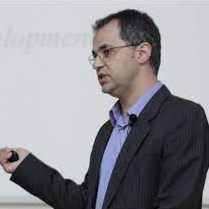Advances in Synthesis and Biological Activity of Novel Derivatives Based on Five-Membered Heterocyclic Scaffolds and Their Intermediates—Second Edition
A special issue of Molecules (ISSN 1420-3049). This special issue belongs to the section "Organic Chemistry".
Deadline for manuscript submissions: 30 June 2024 | Viewed by 663
Special Issue Editors
Interests: organic chemistry; heterocycle chemistry; medicinal chemistry; organic synthesis and structure elucidation; 1,3-oxazole; N-acyl-α-amino acid; α-acylamino ketone; diphenyl sulfone scaffold
Special Issues, Collections and Topics in MDPI journals
Interests: the design and synthesis of new anticancer agents; the design and synthesis of new antimicrobial compounds; studies and structural analysis; the isolation and analysis of natural compounds with anticancer effects; computer-assisted drug design studies
Special Issues, Collections and Topics in MDPI journals
Interests: organic chemistry; organic synthesis and structural analysis; medicinal chemistry; 5H-dibenzo[a,d][7]annulene; hydrazone; hydrazinecarbothioamide; 1,2,4-triazole; 1,3,4-oxadiazole
Special Issues, Collections and Topics in MDPI journals
Special Issue Information
Dear Colleagues,
Five-membered heterocyclic compounds (imidazoles, pyrazoles, oxazoles, thiazoles, triazoles, oxadiazoles, thiadiazoles, etc.) are very important in pharmaceutical and medicinal chemistry, as it is known that representatives of this class are the basis of many drugs with various therapeutic actions, including antimicrobial, antiviral, anticancer, anti-inflammatory, analgesic, and antidiabetic activities. Currently, this field is being studied extensively by a large number of researchers in order to discover and develop new pharmaceutical agents and bioactive molecules. Thus, recent progress in synthetic approaches to nitrogen-, oxygen-, and sulfur-containing five-membered heterocycles includes different synthesis protocols, such as multi-step strategies, multi-component pathways, photocatalysis, click reactions, and microwave-assisted or green synthesis, with pharmacologically potent derivatives reported.
This Special Issue aims to provide a summary of the recent advances in the synthesis and biological activity of novel derivatives based on five-membered heterocyclic scaffolds and their intermediates (N-acyl-α-amino acids, α-acylamino ketones, acyl hydrazones, acyl thioureas, hydrazinecarbothioamides, isocyanates, isothiocyanates, etc.). We invite you to contribute original research articles and/or reviews of the current scientific literature to this Special Issue of Molecules focused on the design, obtainment, and biological activity assessment of new pentatomic heterocyclic scaffolds and their intermediates.
Dr. Theodora Venera Apostol
Prof. Dr. George Mihai Nitulescu
Prof. Dr. Laura Ileana Socea
Guest Editors
Manuscript Submission Information
Manuscripts should be submitted online at www.mdpi.com by registering and logging in to this website. Once you are registered, click here to go to the submission form. Manuscripts can be submitted until the deadline. All submissions that pass pre-check are peer-reviewed. Accepted papers will be published continuously in the journal (as soon as accepted) and will be listed together on the special issue website. Research articles, review articles as well as short communications are invited. For planned papers, a title and short abstract (about 100 words) can be sent to the Editorial Office for announcement on this website.
Submitted manuscripts should not have been published previously, nor be under consideration for publication elsewhere (except conference proceedings papers). All manuscripts are thoroughly refereed through a single-blind peer-review process. A guide for authors and other relevant information for submission of manuscripts is available on the Instructions for Authors page. Molecules is an international peer-reviewed open access semimonthly journal published by MDPI.
Please visit the Instructions for Authors page before submitting a manuscript. The Article Processing Charge (APC) for publication in this open access journal is 2700 CHF (Swiss Francs). Submitted papers should be well formatted and use good English. Authors may use MDPI's English editing service prior to publication or during author revisions.
Keywords
- bioactive heterocycles
- heterocyclic scaffolds
- bioisosteric heterocyclic skeletons
- azoles
- pyrazole
- oxazole
- triazole
- oxadiazole
- drug design
- in silico studies







